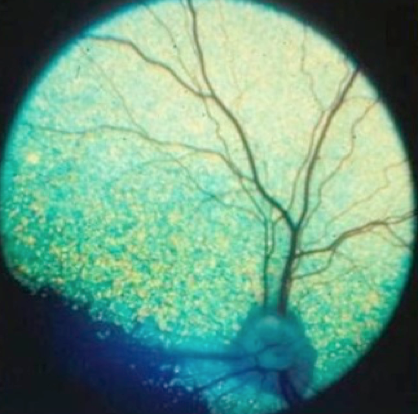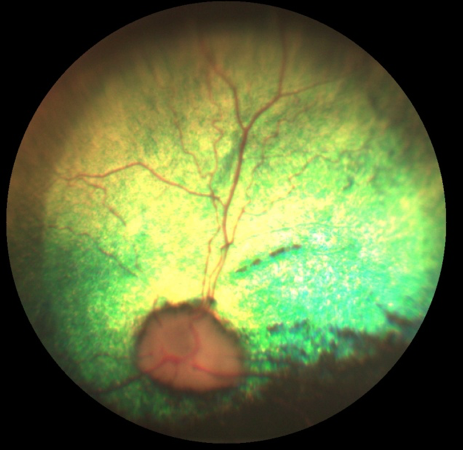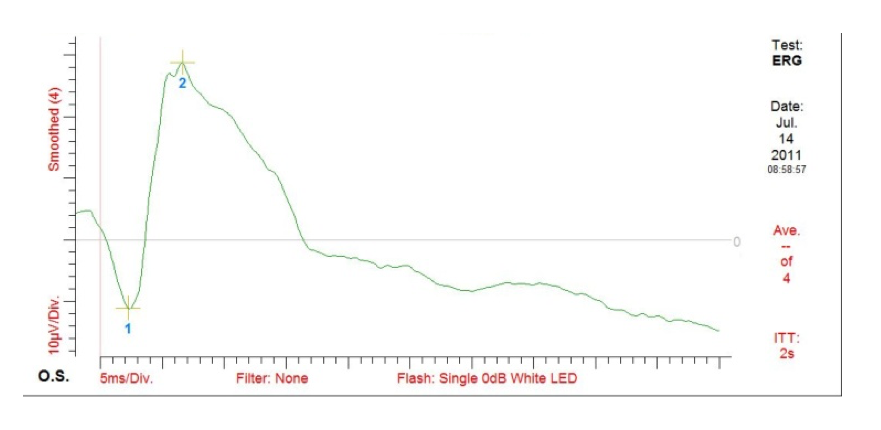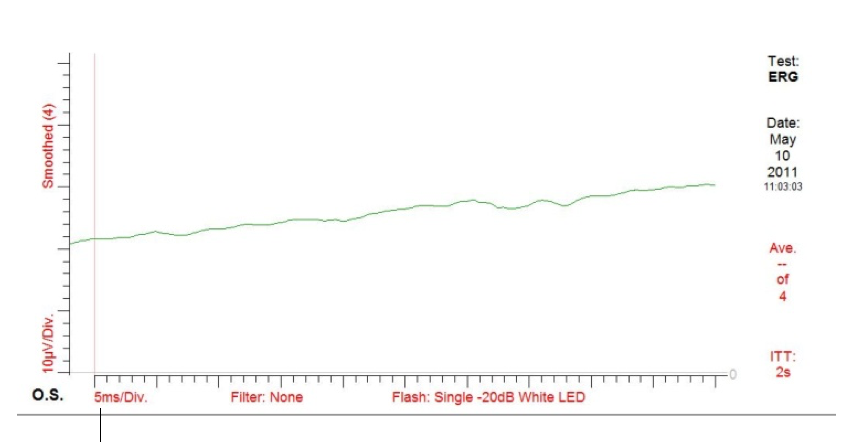What is progressive retinal atrophy?
Progressive retinal atrophy is an incurable, but painless, disease of the retina that results in complete loss of vision (blindness).
The light reaches the retina, which covers the posterior part of the eye, and the image forms on the retina, like on camera film. Sensitive (nerve) cells in the retina called cones and rods transform light into an electrical signal which travels along the optic nerve to reach the brain where the electrical message is translated into “sensation” which is sight. .
During progressive retinal atrophy, the cones and rods degenerate and die, so light is no longer transformed into an electrical signal and vision is affected. The rods which are the cells of the retina responsible for night vision are the first elements to be affected by this disease; thus the animal will start by stumbling into objects in the twilight or darkness (loss of night vision). The cones, responsible for color vision and day vision degenerate more slowly. As the name suggests, this disease is progressive; the animal can therefore adapt and behave normally at the onset of the disease. It is possible for the degeneration of cones and rods to take months or years to become truly marked. Vision loss can come on really suddenly after the disease has been progressing slowly for quite some time.
Progressive retinal atrophy is diagnosed by a direct examination of the fundus using a device called an ophthalmoscope and also by an electroretinogram (ERG). The ERG is an electrical test of the activity of the retina. Progressive retinal atrophy is an inherited disease of the retina in many breeds of dogs and cats including Miniature Poodles, Schnauzers, Yorkshire Terriers, English Cockers, Irish Setters, and Collies. There is currently no treatment and cure for progressive retinal atrophy.
Most dogs and cats can easily adapt to their blindness if their environment is not continuously changed. The main concern is the safety of the animal with this disease. For example, swimming is a significant risk because blind animals may not necessarily be able to find their way around all the time, especially when they fall into the pool. You have to help your pet to avoid obstacles, pedestrians, cyclists and motorists who rely on your pet to move and clear the way. You will learn very quickly to be a “blind guide” for your animal who will adapt very quickly to this new situation.

Normal aspect of the retina in a dog
Visual eye
Normal retinal vessels
Normal reflectivity of the carpet (green zone)

Retinal atrophy in a dog makes the eye non-visual
Fewer and finer vessels
Mat hyperreflectivity, optic nerve head pale

Normal look of an ERG

ERG abnormal: the curve is almost flat

Protection system for a blind dog

